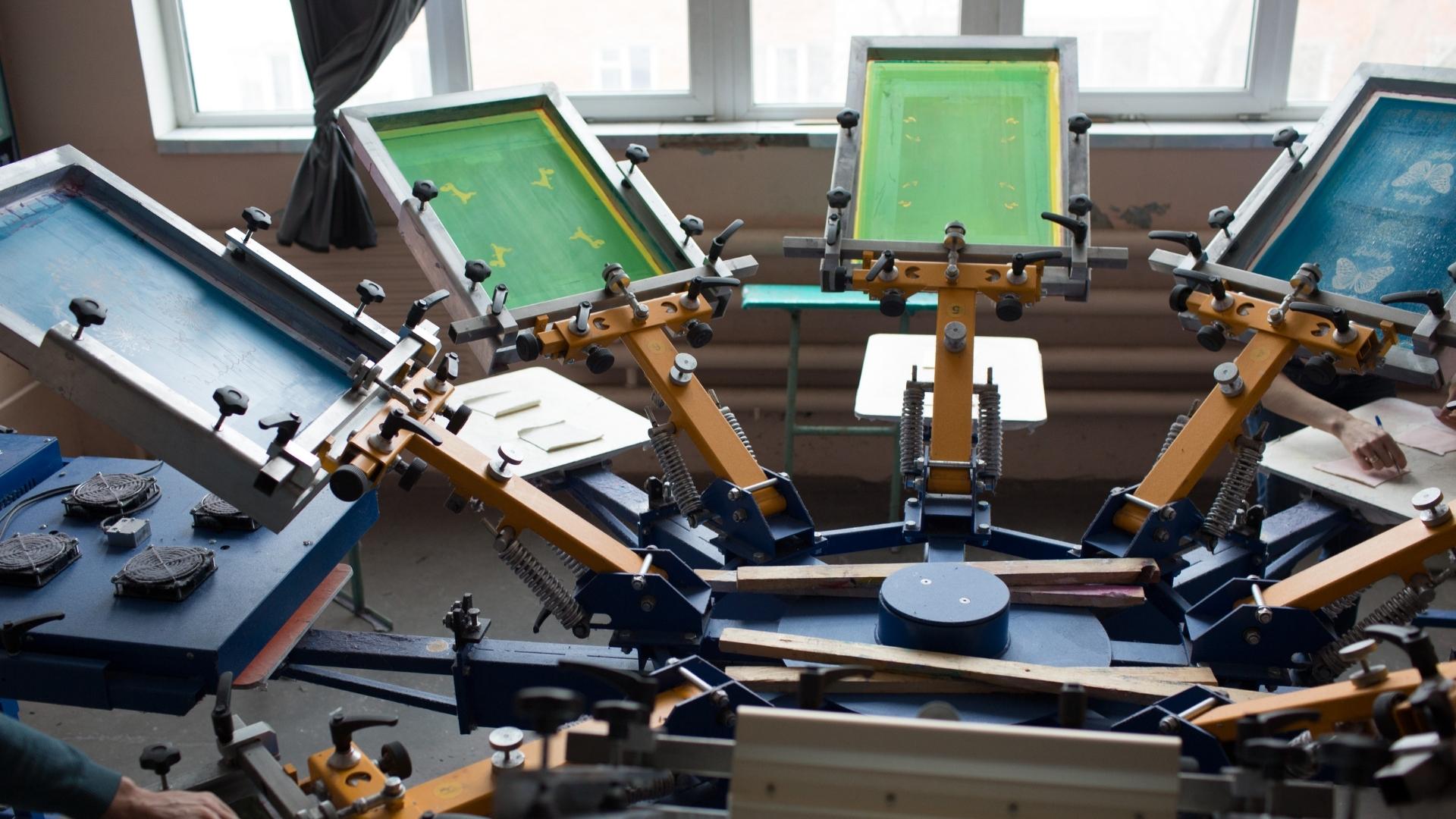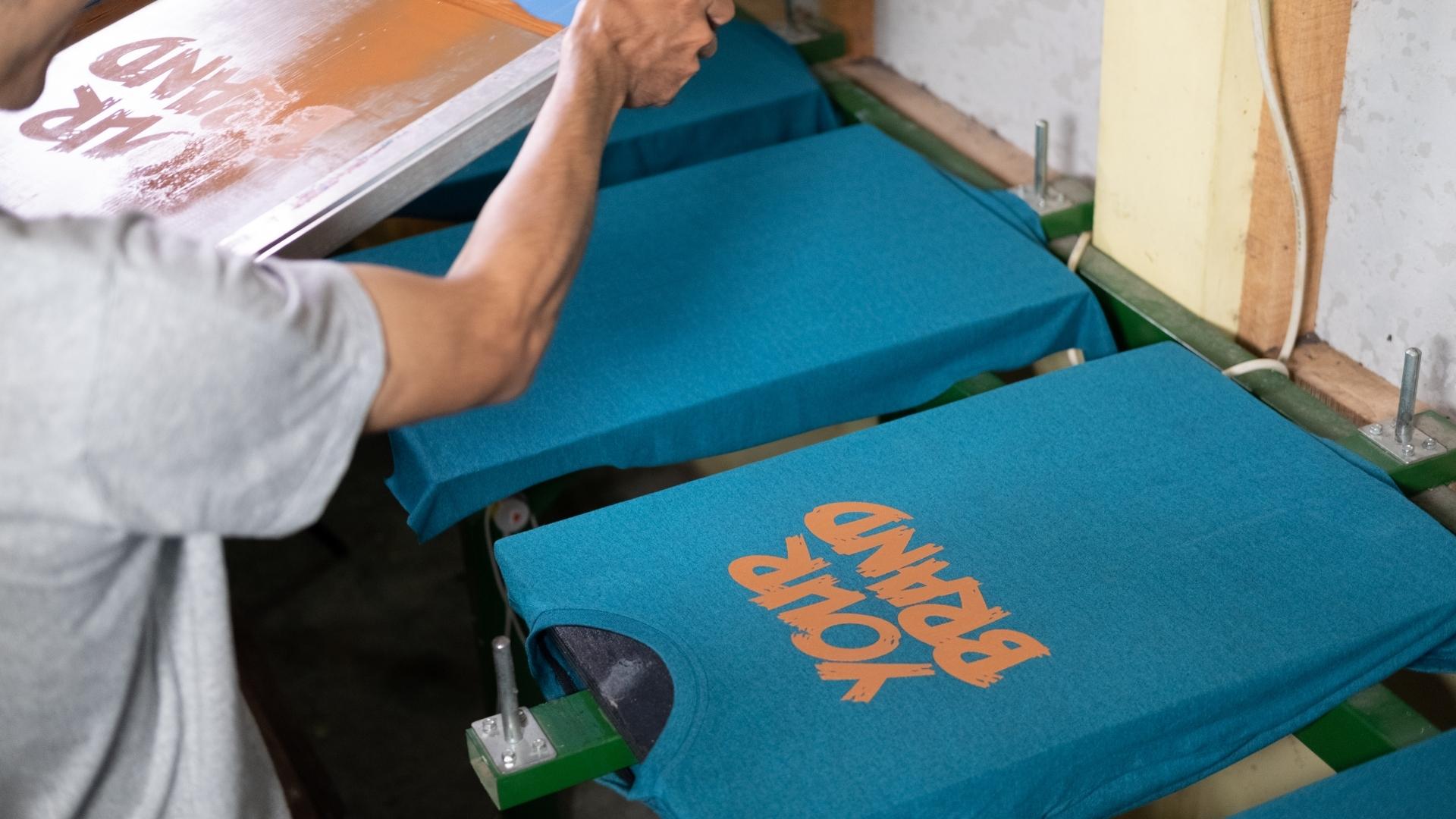ChatGPT said: Why 10:9 Design Screen Printing is perfect for event merchandise
Discover the Various Kinds of Screen Printing Techniques for Your Following Task
Screen printing uses a varied variety of techniques that can boost any type of imaginative task. From conventional approaches like serigraphy to contemporary technologies such as direct-to-garment printing, each method has its one-of-a-kind advantages. Specialized options, including metal and environment-friendly inks, introduce a lot more opportunities. Understanding these methods can substantially impact the last end result. The challenge exists in picking the most appropriate technique for certain needs and wanted results. What variables should one take into consideration?

The Essentials of Screen Printing
Although screen printing may appear complicated, it is essentially an uncomplicated procedure that includes moving ink via a mesh screen onto various surfaces. The method starts with the development of a pattern, which specifies the design to be published. This pattern is affixed to a mesh screen, normally made from polyester or nylon. As soon as the stencil remains in place, ink is used to the screen and pressed through the mesh using a squeegee, resulting in the wanted pattern being printed on the underlying product.
Screen printing can be carried out on a vast array of substratums, consisting of paper, plastic, and material, making it a versatile selection for different tasks. The procedure enables vibrant colors and detailed styles, making it preferred in sectors such as advertising, art, and style. Comprehending these fundamentals furnishes individuals with the fundamental understanding called for to check out even more innovative techniques in screen printing.
Standard Screen Printing Techniques
Conventional screen printing methods have been utilized for centuries, maintaining the craftsmanship and artistry of this technique. This method utilizes a mesh screen to transfer ink onto a substrate, such as fabric or paper, permitting vivid and lasting layouts. The procedure begins with developing a stencil, which blocks particular locations of the screen to regulate where the ink will be applied.
One prominent technique is serigraphy, usually made use of for minimal editions and creative prints. One more is using water-based inks, which are environment-friendly and give a soft feel on textiles - 10:9 Design reviews. Furthermore, traditional techniques can include hands-on printing, where craftsmens use ink with a squeegee, making sure precision and focus to information
These techniques continue to be valued in the market for their tactile top quality and the unique textures they create, appealing to both makers and consumers that value the heritage of screen printing.
Digital Screen Printing Innovations
As the need for faster manufacturing and modification in the printing industry has actually surged, digital screen printing advancements have actually become a game-changer. This technology blends traditional screen printing methods with electronic processes, permitting fast prototyping and elaborate designs that were formerly tough to attain. One considerable improvement is the intro of direct-to-garment (DTG) printing, which promotes top notch, full-color prints on different fabrics without the requirement for screens. In addition, developments in ink formulas have led to green options that maintain vivid colors while reducing ecological effect. Using automated systems better streamlines production, minimizing labor expenses and improving precision. These innovations not just satisfy tiny set orders and customized styles yet also enable quicker turn-around times, making them ideal for services concentrated on meeting consumer demands in a fast-paced market. Digital screen printing, subsequently, represents an important advancement in the domain of printing methods.
Specialized Screen Printing Approaches
Discovering specialty screen printing approaches reveals a diverse array of methods that press the borders of imagination and capability in the printing sector. Amongst these, glow-in-the-dark inks supply an one-of-a-kind aesthetic impact, making styles come alive in low-light problems. Metallic inks, recognized for their sparkling coating, include a touch of deluxe to printed materials. An additional cutting-edge approach is discharge printing, which eliminates dye from the fabric instead of adding ink, leading to a soft, classic feeling. High-density printing creates an increased texture on the surface area, enhancing responsive involvement. In addition, water-based inks are acquiring appeal for their vibrant colors and minimized environmental influence. Each of these specialty methods satisfies specific layout needs, allowing musicians and brand names to create standout items that reverberate with their target markets. By leveraging these approaches, businesses can boost their screen printing tasks to new heights, making certain memorable impacts.
Eco-Friendly Screen Printing Options
Environmentally friendly screen printing choices are getting traction as the sector changes towards sustainability. Lasting ink selections and using biodegradable products are essential parts in decreasing the ecological influence of the printing process. By adopting these practices, screen printers can add to a much more lasting future while maintaining high-grade outcomes.
Lasting Ink Choices

Biodegradable Materials Use
As the screen printing market progresses, the consolidation of naturally degradable materials is becoming progressively important for ecologically conscious practices. Designers and producers are now checking out inks and substrates made from natural, sustainable sources that break down much more efficiently than conventional counterparts. These biodegradable alternatives lower plastic waste and decrease environmental influence, lining up with the expanding demand for lasting items.
Usual examples consist of water-based inks and organic cotton fabrics, both of which lessen harmful chemicals and advertise eco-friendliness. Brands that adopt these products typically improve their market appeal, bring in consumers that focus on sustainability. As recognition of ecological problems remains to climb, the shift in the direction of eco-friendly products in screen printing is likely to acquire momentum, promoting a greener sector standard.
Choosing the Right Strategy for Your Task
Exactly how can one establish one of the most ideal screen printing strategy for a specific job? The decision pivots on several variables, consisting read the full info here of the product to be printed on, the intricacy of the layout, and the preferred production volume - 10:9 Design Screen Printing. Direct-to-garment printing is optimal for elaborate layouts with countless colors, while visit this website traditional screen printing stands out for larger runs of less complex graphics.
In addition, factor to consider of the end-use of the printed item is vital. For exterior applications, techniques that supply durability and weather resistance, such as plastisol ink, may be preferred. On the other hand, environmentally-conscious tasks may take advantage of water-based inks or naturally degradable products.
Eventually, recognizing the project's distinct demands permits an informed choice, ensuring both aesthetic charm and practical durability. By reviewing design intricacy, material compatibility, and production scale, one can effectively select one of the most proper screen printing method to meet their job's goals.
Frequently Asked Questions
What Is the Background of Screen Printing?
Screen printing came from ancient China around 1000 ADVERTISEMENT, evolving through Japan and Europe. By the 20th century, it became popular in industrial art and fashion, reinventing how designs were created and distributed internationally.

Just how Do I Prepare Art Work for Screen Printing?
To prepare artwork for screen printing, one should assure high resolution, use a suitable color setting, develop separate layers for each and every color, and transform message to details, ensuring compatibility with the printing process and desired outcome.
What Materials Are Ideal for Screen Printing?
The most effective materials for screen printing include high-grade inks, long lasting displays, and ideal substrates like cotton, polyester, or blends. Furthermore, using proper emulsion and squeegees can enhance the printing procedure and final results.
Can I Screen Print at Home?
Yes, screen printing in your home is feasible. With the best materials, setup, and strategies, people can produce top quality prints. Nonetheless, careful consideration of office and equipment is essential for effective outcomes.

What Prevail Blunders in Screen Printing?
Typical blunders in screen printing include inappropriate direct exposure times, insufficient ink consistency, imbalance of screens, inadequate cleansing of materials, and overlooking to examine prints. These mistakes can endanger the quality and accuracy of the final item.
Screen printing might seem complicated, it is basically a simple process that includes moving ink my blog with a mesh screen onto different surface areas. As the need for faster production and personalization in the printing industry has actually risen, digital screen printing innovations have arised as a game-changer. Discovering specialized screen printing techniques discloses a diverse array of methods that press the borders of creative thinking and performance in the printing sector. The finest materials for screen printing include premium inks, sturdy displays, and suitable substratums like cotton, polyester, or blends (10:9 Design Embroidery). Typical mistakes in screen printing include inappropriate exposure times, poor ink consistency, imbalance of displays, not enough cleansing of products, and ignoring to test prints